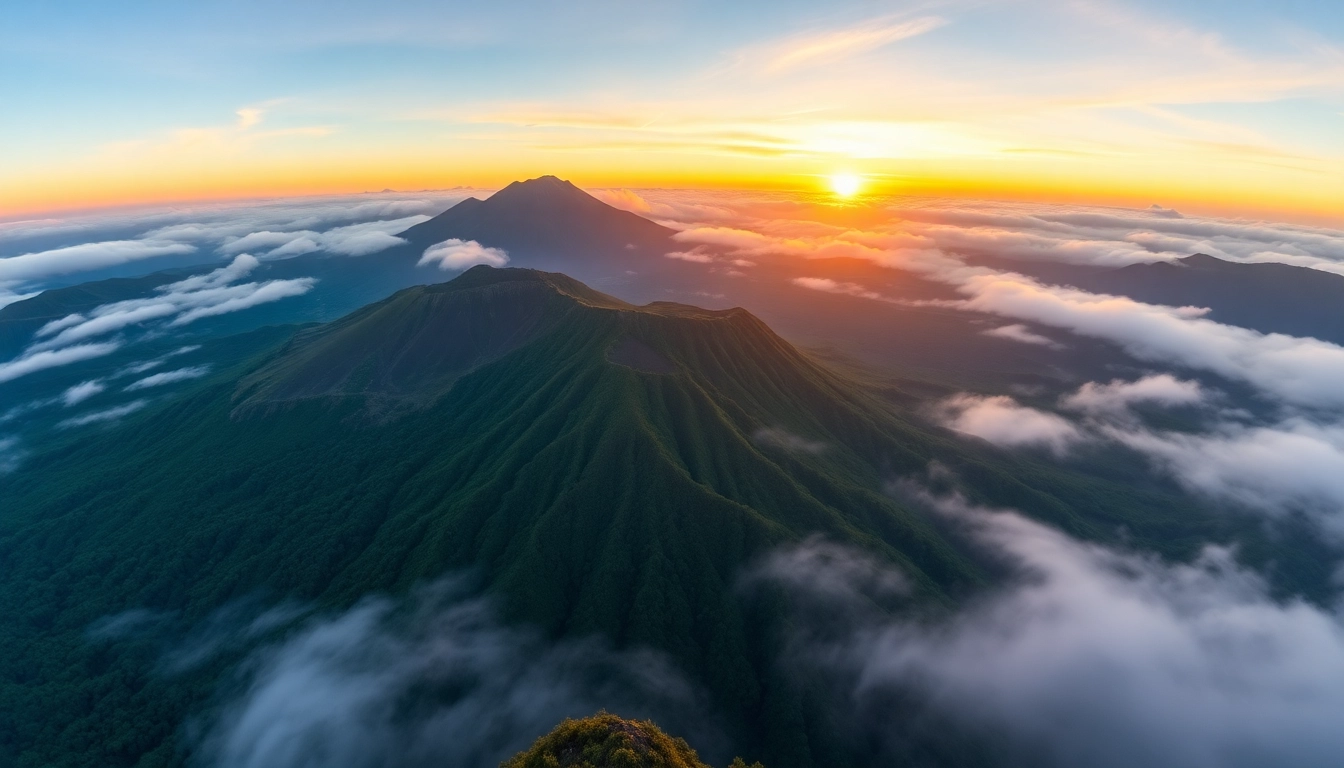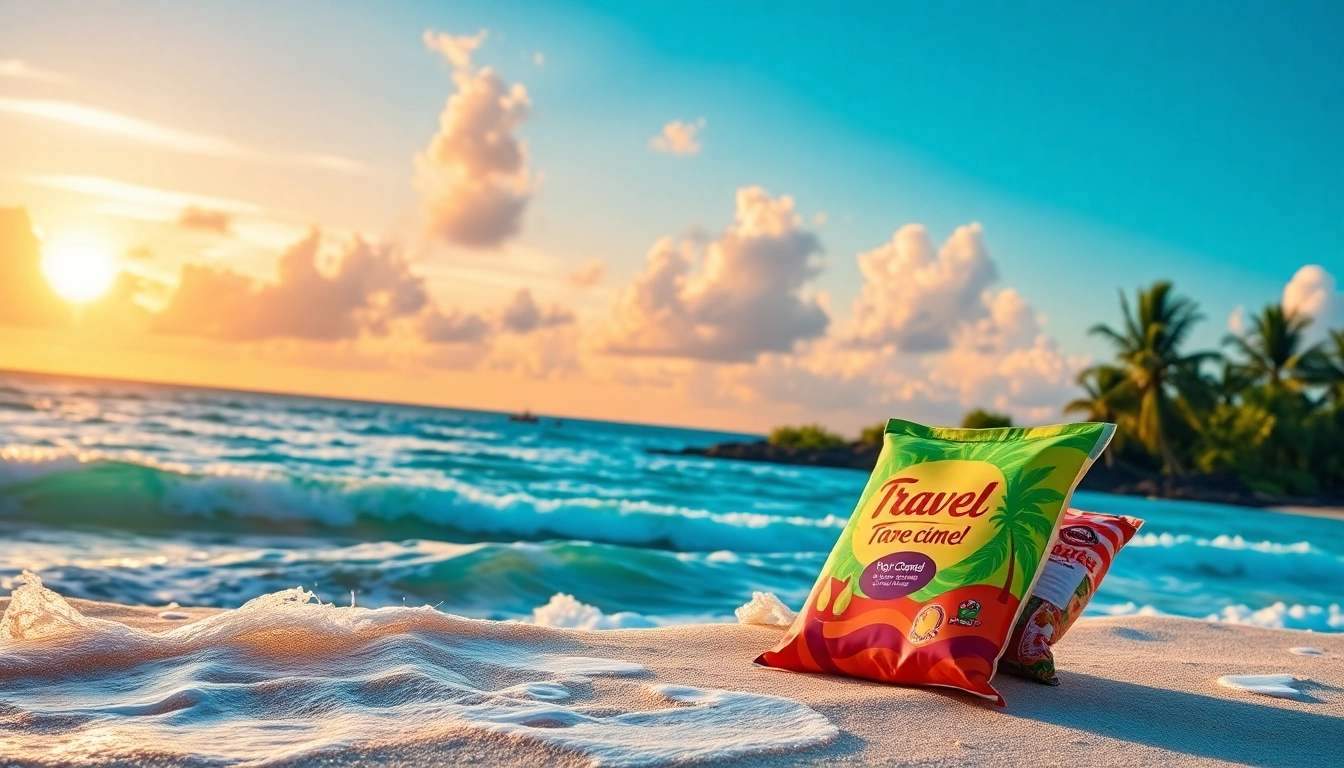Introduction to Mount Rinjani
Perched majestically on the island of Lombok in Indonesia, Mount Rinjani stands as one of Southeast Asia’s most iconic and awe-inspiring volcanoes. As the second-highest volcano in Indonesia, Rinjani’s towering presence commands respect and curiosity from hikers, geologists, and tourists alike. Its active volcanic status, rich cultural significance, and breathtaking landscapes make it an essential destination for adventure seekers and nature lovers. Whether you are an experienced trekker seeking a challenging ascent or a traveler eager to witness one of Indonesia’s natural wonders, understanding Rinjani’s intricate features and offerings is paramount to planning a successful expedition.
1. Overview of Mount Rinjani
1.1. Geographical Location and Significance
Mount Rinjani is situated in the northern part of Lombok island, within the boundaries of the Rinjani National Park, a designated protected area covering approximately 41,330 hectares. The volcano’s summit reaches an elevation of 3,726 meters (12,224 feet) above sea level, making it the second-highest volcano in Indonesia after Mount Kerinci. Its strategic placement within the Wallacea biogeographical transition zone makes it a biodiversity hotspot, hosting an array of endemic flora and fauna. The mountain’s prominence not only shapes the local climate but also influences ecological systems across the region, fostering a unique environment that supports diverse life forms.
Geographically, Mount Rinjani plays a vital role in the cultural and environmental landscape of Lombok. Historically, it has been a spiritual symbol for local Sasak and Sasak-related communities. Its significance extends into ecological studies due to its active volcanic nature, with eruptions shaping the island’s topography and influencing regional climate patterns over centuries.
1.2. Geological and Volcanic Features
As an active stratovolcano, Rinjani exhibits classic volcanic features including a prominent summit caldera, a lush crater lake known as Segara Anak, and several hot springs. The volcano’s geological makeup is primarily composed of andesitic and basaltic lava flows, characteristic of subduction zone volcanism prevalent in Indonesia. Its most recent significant eruption occurred in 2016, reminding us of its active status and potential for future activity.
The caldera, measuring approximately 8 by 9 kilometers, encapsulates the stunning Segara Anak Lake, a crater lake renowned for its turquoise waters and mystical aura. Trekkers often visit this natural wonder, which offers picturesque views and thermally heated hot springs that soothe exhausted muscles after demanding ascents. The geological processes at play within Rinjani also include frequent seismic activity, which provides valuable data for volcanologists tracking eruption patterns and eruption forecasting techniques.
1.3. Cultural and Historical Importance
Mount Rinjani holds profound cultural significance for the local populations of Lombok, especially among the Sasak tribes. Its sacred status is rooted in centuries-old traditions, where the volcano is revered as a divine entity that sustains life and promises prosperity. Annual rituals and festivals revolve around the volcano, emphasizing respect and harmony with nature.
Historically, eruptions such as the catastrophic eruption of Gunung Samalas in 1257, a precursor to Rinjani, dramatically impacted regional history. The event triggered global climatic shifts, including a drop in temperatures and crop failures, illustrating the volcano’s far-reaching influence. Rinjani’s rich historical tapestry blends natural phenomena with local mythologies, making it a compelling site for anthropological and archaeological studies.
2. Planning Your Mount Rinjani Trek
2.1. Best Seasons and Times to Visit
Timing is crucial for a successful ascent of Mount Rinjani. The optimal trekking season is during the dry months from May to September, when rainfall is minimal, and visibility remains high. During this period, the weather tends to be cooler and more stable, reducing the risks associated with flash floods, landslides, and slippery trails. The peak tourist season peaks in July and August, so booking in advance is highly recommended to secure permits and guided tour packages.
Should you prefer a quieter experience, consider trekking during shoulder months such as April or October, when weather conditions are generally still favorable, but the trails are less crowded. Avoid the rainy season from November to March, as monsoon rains can obscure visibility, make paths treacherous, and increase the likelihood of landslides.
Proper preparation is essential for conquering Rinjani’s challenging terrains. A comprehensive packing list should include:
- Clothing: Warm, windproof jackets, thermal layers, moisture-wicking shirts, sturdy hiking boots, gloves, hats, and rain gear.
- Camping gear: Lightweight tents, sleeping bags suited for low temperatures, and portable cooking equipment if not guided.
- Navigation and Safety: GPS devices, maps, a first aid kit, headlamps, and sufficient water and high-energy snacks.
- Permits and Documentation: Valid identification, trekking permits, and any required authorizations obtained through licensed tour operators.
Physical fitness is equally important. Engaging in cardio, strength, and altitude training weeks before your trek can significantly enhance your endurance and reduce fatigue during the climb.
2.3. Guided Tours and Permits
Trekking Mount Rinjani independently is highly discouraged due to the complexities and safety considerations involved. Instead, it’s advisable to engage reputable local tour operators who provide guided packages, permits, and logistics support. Guided treks typically include experienced guides, porters, and safety personnel familiar with the terrain and emergency procedures.
Permits are mandatory for trekking within the national park, and they can be arranged through your tour operator. These permits not only grant access but also contribute to park conservation efforts and local community support initiatives. Ensure that your chosen provider complies with responsible tourism standards to minimize environmental impact and promote the well-being of local communities.
3. Trekking Routes and Challenges of Mount Rinjani
3.1. Sembalun and Senaru Trails
Two primary routes dominate the approach to Mount Rinjani: the Sembalun and Senaru trails. Each offers distinct experiences, advantages, and challenges, catering to different skill levels and preferences.
Sembalun Trail
The Sembalun route begins in the fertile, highland village of Sembalun Lawang. Known for its relatively gentle ascent, it is favored by trekkers seeking a balanced challenge. The trail passes through diverse landscapes, including grassy plains, savannas, and lush forests, providing panoramic views of the surrounding mountains and valleys. The ascent is approximately 27 km, typically completed in 2-3 days, with camp sites available at strategic points.
Senaru Trail
The Senaru approach starts from the village of Senaru, descending into the crater rim. This route is more demanding, featuring steeper sections and denser jungle terrain. It is preferred by experienced hikers looking for a more rigorous adventure, often completed over 2 days with overnight stays at the crater rim. The terrain demands sturdy footwear and acclimatization to higher altitudes.
3.2. Distance, Duration, and Difficulty
The total distance of the primary trekking routes ranges from approximately 27 to 35 km, depending on the chosen trail and specific campsite locations. The ascent and descent involve significant elevation gains, with cumulative climbs exceeding 2,600 meters.
Most guided tours from reputable operators last 2-4 days, accommodating various fitness levels and interests. While the Sembalun route is moderately challenging, the Senaru route presents a higher difficulty level due to steeper inclines and denser terrain. Trekkers should prepare physically and mentally for altitudes reaching over 3,000 meters, where symptoms of altitude sickness can occur if unacclimatized.
3.3. Safety Tips and Common Obstacles
Safety is paramount during your Rinjani adventure. Common challenges include unpredictable weather, altitude sickness, slippery paths, and fatigue. To mitigate these risks:
- Weather vigilance: Always check forecasts and be prepared for sudden weather changes.
- Acclimatization: Ascend gradually, stay hydrated, and recognize symptoms of altitude sickness early.
- Navigation: Stick to marked trails and follow your guide’s instructions.
- Hydration and Nutrition: Maintain proper hydration and consume high-energy foods to sustain stamina.
- Emergency preparedness: Carry a communication device and know the location of the nearest rescue stations.
Ensuring safety and respect for the environment not only protects you but also helps preserve Rinjani’s pristine conditions for future generations.
4. Experience and Attractions on Mount Rinjani
4.1. Crater Lake and Hot Springs
The highlight of any Rinjani trek is witnessing the serene beauty of Segara Anak, the volcanic crater lake. Its striking turquoise waters are nestled within the caldera, offering stunning views that epitomize volcanic grandeur. Many trekkers choose to relax in the natural hot springs nearby, which are heated by underground geothermal activity. These springs are not only therapeutic but offer a rejuvenating experience after days of strenuous hiking, providing both physical relief and spectacular scenery.
Beyond the lake, the surrounding landscape features waterfalls, moss-covered rocks, and unique geological formations that deepen the sense of wonder and adventure.
4.2. Unique Flora and Fauna of Rinjani National Park
Rinjani National Park is a biological treasure trove. The diverse ecosystems include tropical rainforests, montane forests, and alpine zones. Endemic species such as the Lombok snake-eyed turtle and the Rinjani scops owl inhabit this protected area. The park’s biodiversity also encompasses a wide array of orchids, ferns, and medicinal plants.
The park’s fauna includes mammals like wild boars, deer, and civet cats, alongside numerous bird species. Conservation efforts focus on maintaining this delicate ecological balance, making it essential for visitors to adhere to responsible tourism practices to minimize environmental impact.
4.3. Cultural Sites and Local Villages
Interwoven with natural beauty are cultural experiences. Visitors can explore traditional Sasak villages, where local artisans craft textiles, pottery, and wood carvings. Cultural festivals coincide with certain times of the year, featuring traditional music, dance, and rituals honoring the mountain deities. Participating respectfully in these cultural expressions enriches the trekking experience and fosters appreciation for local heritage.
5. Conservation and Responsible Tourism at Rinjani
5.1. Protecting the Environment and Wildlife
Preserving Rinjani’s pristine environment requires concerted efforts from both park authorities and visitors. Strict regulations prohibit littering, unauthorized camping, and deforestation. Visitors are encouraged to practice “Leave No Trace” principles, ensuring that waste is carried out and natural resources are protected.
Additionally, supporting eco-friendly guides and local communities by choosing certified tour operators helps fund conservation initiatives and provides economic benefits to the region. Monitoring and research programs also play critical roles in understanding and mitigating the impacts of tourism and volcanic activity.
5.2. Supporting Local Communities
Engaging with local communities boosts sustainable development. Purchasing handcrafted souvenirs, staying in locally-owned accommodations, and participating in cultural exchanges empower residents economically. many tour packages include community visits that promote cultural appreciation and tourism revenue sharing.
Promoting responsible tourism ensures that local traditions are respected, and environmental footprints are minimized, fostering a mutually beneficial relationship between visitors and residents.
5.3. Sustainable Practices for Visitors
To do your part, adhere to these best practices:
- Carry reusable water bottles and utensils.
- Respect trail signs and designated camping areas.
- Limit the use of single-use plastics.
- Engage with local guide services and avoid exploitative arrangements.
- Participate in awareness campaigns and educational programs offered within the park.
By practicing sustainability, visitors help ensure Mount Rinjani remains an unspoiled natural monument and cultural hub for generations to come.

